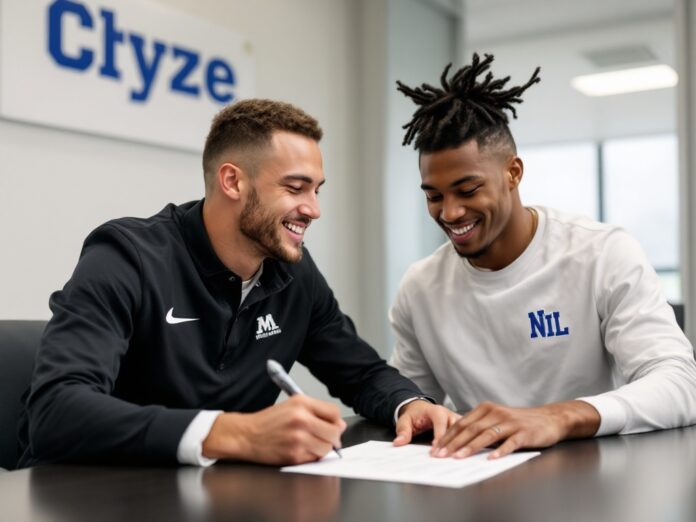
The landscape of collegiate athletics has been transformed by Name, Image, and Likeness (NIL) opportunities. According to the NCAA Compliance Office, NIL deals generated over $1.2 billion in student-athlete compensation in 2024, with projections showing continued growth through 2025.
Updated NIL Regulations for 2025
The National Association of NIL Compliance has introduced new requirements for D1 athletes engaging in NIL activities. Key updates include mandatory disclosure of deals exceeding $500, enhanced social media disclosure requirements, and stricter guidelines around cryptocurrency and betting-related partnerships.
Eligibility Requirements
According to the College Sports Legal Association, D1 athletes must meet several criteria to participate in NIL activities:
- Maintain academic eligibility standards
- Complete NIL education modules
- Register all deals through institutional compliance offices
- Adhere to state-specific NIL regulations
- Maintain clean conduct records
Disclosure and Reporting
The NIL Oversight Committee mandates specific reporting requirements:
- Deal terms and compensation details
- Partnership duration and obligations
- Conflict checks with institutional sponsors
- Tax implications and documentation
- Performance metrics and deliverables
The NCAA Compliance Office has established stringent guidelines for NIL activities. Athletes must ensure all deals meet these core requirements:
Institutional Compliance
- Submit deal details within 72 hours of agreement
- Provide copies of all contracts and agreements
- Document all compensation, including in-kind benefits
- Register social media accounts used for NIL activities
- Maintain detailed activity logs for each partnership
Third-Party Involvement
- All agents must be registered with the NCAA
- Disclosure of any relationship with boosters
- Clear documentation of payment processing
- Verification of sponsor legitimacy
- Regular auditing of deal activities
Deal Negotiation Best Practices
The Sports Business Journal outlines effective negotiation strategies for student-athletes:
Value Assessment
- Research market rates for similar deals
- Calculate engagement metrics and reach
- Consider time commitment requirements
- Evaluate brand alignment
- Assess long-term career impact
Contract Essentials
- Clear deliverable specifications
- Defined payment terms and schedules
- Explicit usage rights and limitations
- Termination clauses and conditions
- Conflict resolution procedures
Professional Support
- Engage qualified NIL advisors
- Consult with tax professionals
- Review contracts with legal counsel
- Work with personal brand managers
- Maintain relationship with compliance officers
Financial Planning for NIL Success
The Sports Financial Planning Institute emphasizes that proper financial management of NIL earnings can significantly impact an athlete’s long-term success. Research shows that student-athletes who implement structured financial planning from their first NIL deal are 40% more likely to maintain financial stability post-graduation.
Tax Planning and Compliance
According to the National Association of Tax Professionals, NIL income requires careful tax planning and documentation. Athletes should set aside 30-35% of their NIL earnings for tax obligations, depending on their state and total income level. The creation of an LLC or S-Corporation might be beneficial for athletes earning more than $50,000 annually through NIL deals. This structure can provide tax advantages and liability protection, though it requires additional administrative responsibilities.
Investment and Savings Strategies
The College Athlete Financial Advisory recommends implementing a “40-30-30” rule for NIL earnings: 40% allocated to long-term savings and investments, 30% for tax obligations, and 30% for current expenses and emergency funds. Athletes earning significant NIL income should consider opening a Roth IRA, as this investment vehicle offers tax-free growth potential and flexible withdrawal options for future needs.
Insurance and Protection
Research from the Sports Risk Management Associationindicates that athletes with substantial NIL earnings should consider additional insurance coverage. This includes liability insurance to protect against potential lawsuits related to endorsement activities and disability insurance to protect future earnings potential. The cost of these policies typically ranges from 1-3% of annual NIL earnings but can provide crucial protection against unforeseen circumstances.